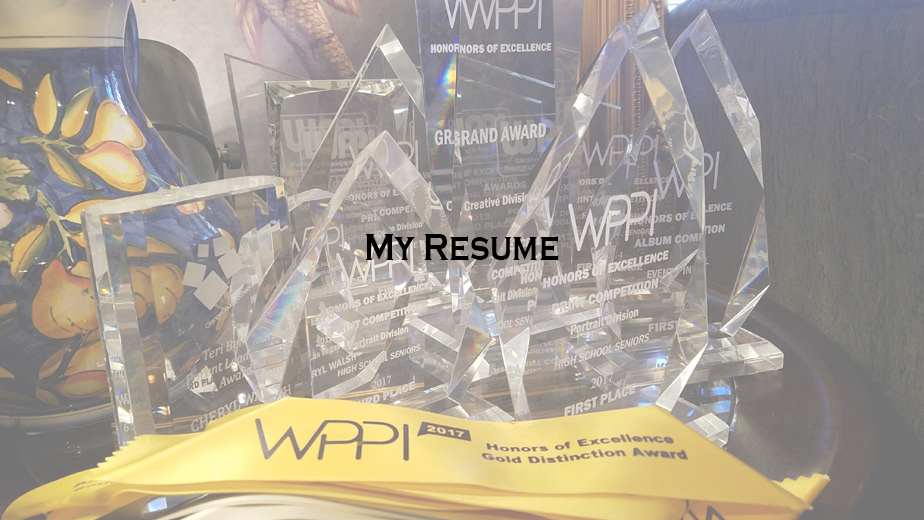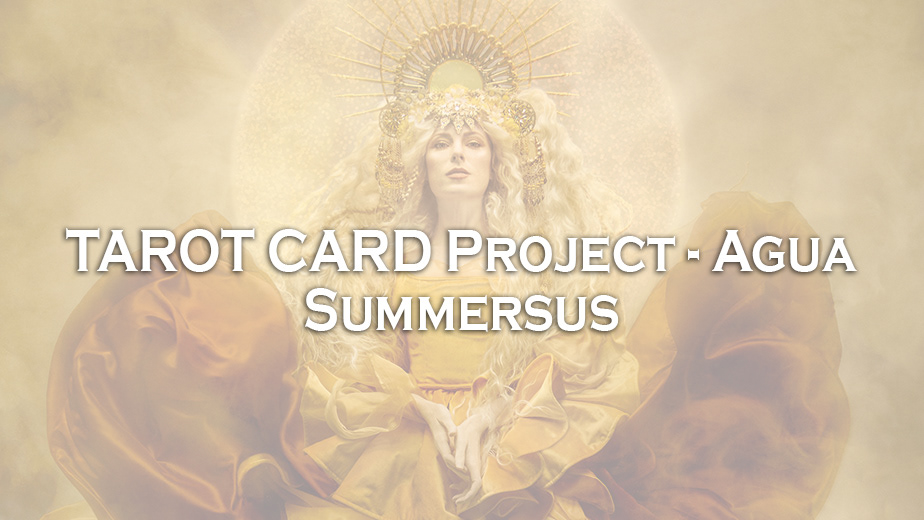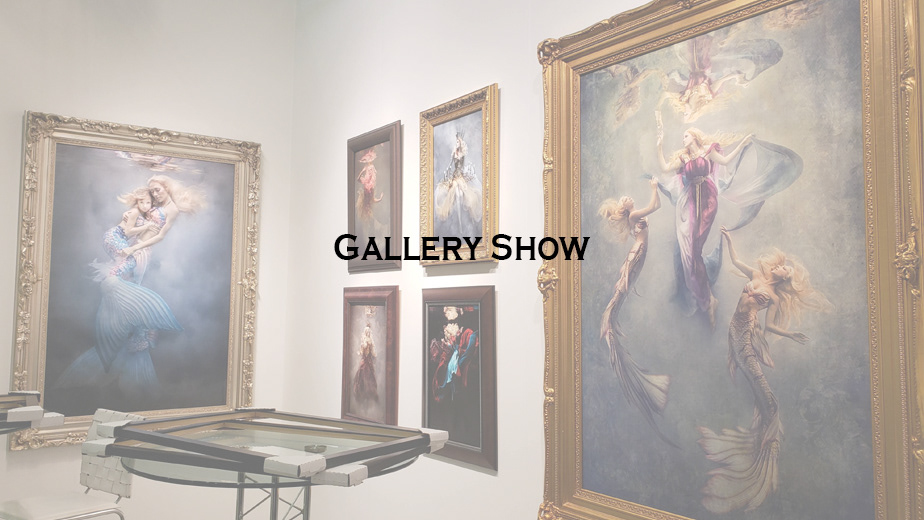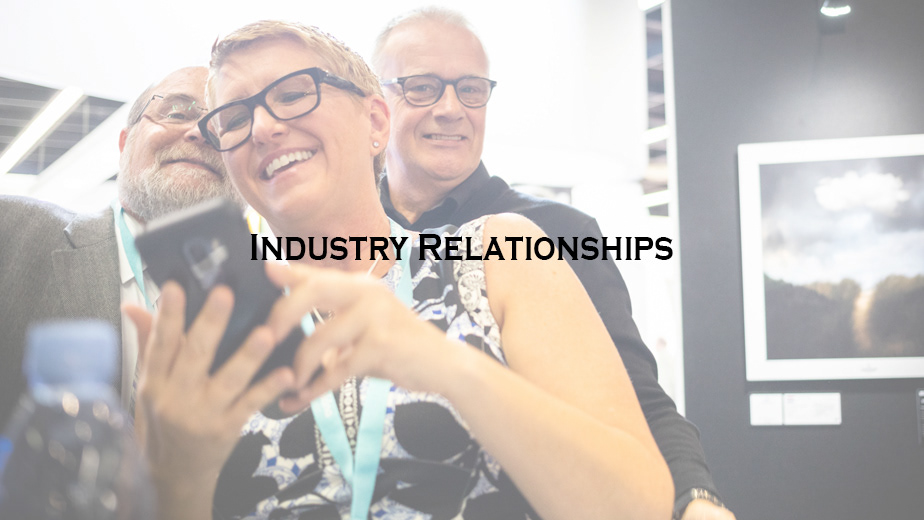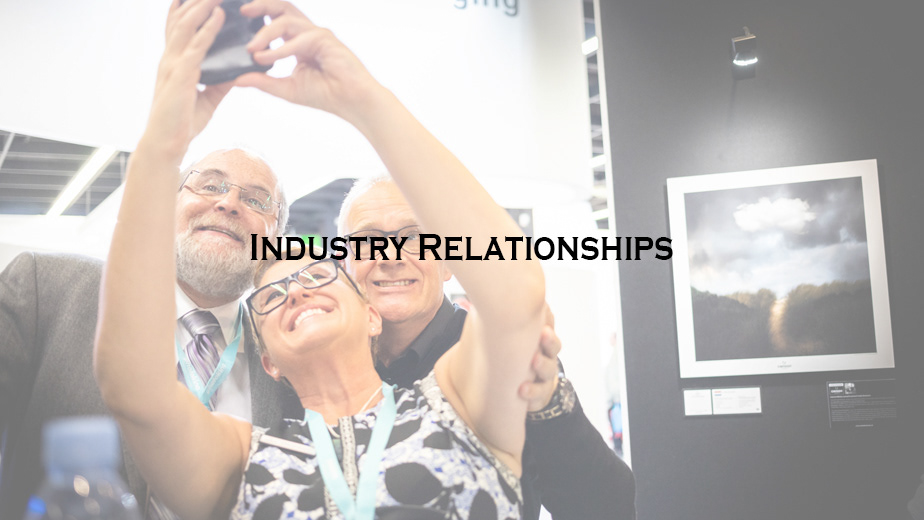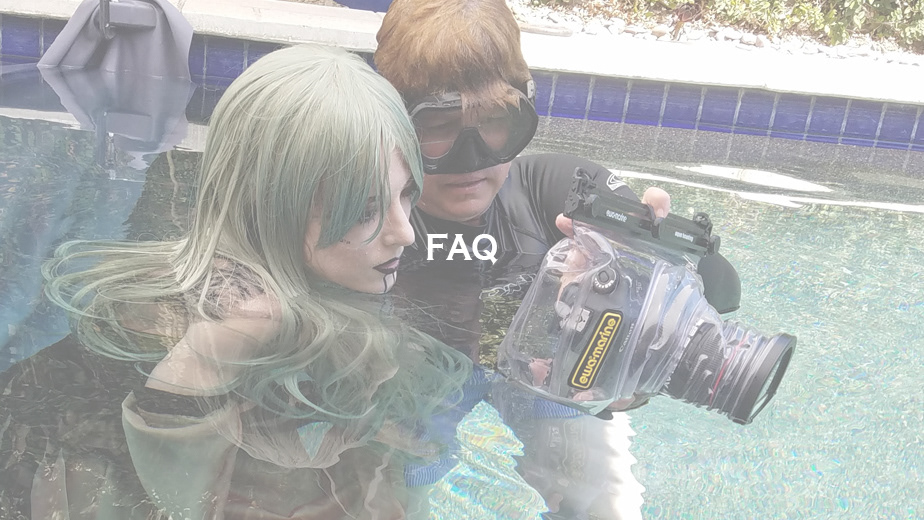A few questions from a recent press interview. Kinda sums me up a bit.
Can you tell me a little more about your background please and how you first moved into photography? I have always been fascinated by photography but didn't really apply myself until I was in my 30s. I had tried to take a photography class at a local college but found that I did much better working at my own pace. I started learning from books then the internet and online classes that I could watch over and over. Taking classes and workshops at conferences like WPPI really helped me grow and open my mind to the possibilities of what I could do. I’ve found that being very versatile with the photography jobs that I’ve been willing to try has made me a much better photographer both technically as well as creatively.
What made you focus on the underwater side of things? I’ve been photographing people underwater for more than 10 years and it really suits my personality. I work underwater because of the atmosphere and how it makes me feel. It’s darker, quiet, and I am isolated with the person I’m photographing. Fabrics and hair defy gravity, moving in slow motion, colors are more vibrant and it's a remarkably calming place. Under the water I can relax and feel free to think creatively without distractions. It’s truly a magical world. I’m where I want to be, doing what I want to be doing and I don't even have to breathe. The question becomes, “Why would I work anywhere else?” If photography is an art and a science, then underwater photography is an art and a science and a science. Mastering the science of working in a liquid environment is the key to good quality underwater portrait photography.
How do you approach your art? By this I mean, are you working in a swimming pool, with scuba equipment, what photographic gear, housings, lighting might you be using? I work in my own swimming pool in my backyard. No scuba equipment. It’s a very simple set-up. I have always used ewa-marine underwater housings and just love them. They are perfectly suited to what I do, in the environment I work in. I’ve found no better system for the work I do and because of the housings versatility I’ve been using some of the same ones with every camera I’ve worked with, including the entire Canon 5D series and the Leica SL. For lighting I use modified natural light along with Rotolight Neo IIs and Aeos in custom ewa-marine housings. Strobe doesn't suit my style of art so having the powerful constant video light with color temperature and power that can be dialed in quickly is exactly what I need. Last year at Photokina in Germany I grabbed the owner of Rotolight and the owner of ewa-marine (both small family owned businesses which is very important to me) brought them together and asked them to create a housing for the Aeos light. They did and that has been revolutionary for me. I use the Neo IIs in ewa-marine tablet housings but the combination of the two light sources really bring it all together.
How do you find your models, who I imagine must have to be ultra-comfortable underwater as well as capable of working with the camera? Most of my models I trained myself but a few had some knowledge before we met. I have a very particular way of working and what I am looking for from my models is quite different than the other photographers they had worked with. I’m looking for people who are very comfortable in the water but mostly who truly understand what it is that I am trying to create. I work with an amazing talented and hard working team of designers, makers, models, make up artists and other creatives. They construct the clothing and accessories but sometimes I come up with my own simple creations. It can start as an individual idea, a group idea or something that is commissioned. The most important thing is that we are all on the same page creatively and we are contributing to each other’s success.
Can you tell me a little more about the fine art side of your business please? I see that you have a shop on your website and are you mainly selling prints and calendars online to collectors? Do you sell through galleries as well? Yes, I have an online shop that has worked well for me. Being in Southern California it’s very expensive to have a physical brick and mortar shop, although some day I’d like to. While I have some clients around the globe who have collected my work I don't really consider my art “collectible” and dont sell it in limited editions. My goal is to create work that takes the viewer to another place—somewhere magical and otherworldly. I just want to make the world a better place, if even for a few minutes, for those who appreciate the kind of work I do. I have been creating a calendar for the past 3 years and that has been very successful. Some of the best feedback I get all year is the monthly messages from people all around the world telling me how much they love changing the page to a new month on their calendar, what the images mean to them, how it always makes them think of the person who gave it to them as a gift and how grateful they are for it. There are no words for how happy that makes me. My art is created through my intention to bring some peace, happiness, relaxation, empowerment and joy into the world so to know that it's working is an incredible gift to me. I recently had my first solo gallery show at OCCCA (Orange County Center for Contemporary Art). My goal was to handle the business side of being an artist. It forced me to organize my work as a commodity by cataloging, naming and pricing all of my images. It was a very ambitious show filling 6300 sq ft so it feels great that I pulled it off. I exhibited over 90 images from 12 years of work and created a multi-media, immersive, storytelling event rather than a traditional gallery show. My view is that much of the value of my work is in the stories behind it. The stories of how it was made, who was involved in making it and what I was thinking and feeling as I created the final pieces. I’m most proud that I printed every single print myself, most 30x40 and larger up to 40x60, mounted them all myself, picked out every single frame, physically helped the framer frame them, designed the show, hung the show with friends, created an immersive “underwater experience” room, edited the video and projections, creatively displayed mermaid tails, organized and moderated an artists’ panel discussion evening with 6 of my frequent collaborators, hosted a fine art printing workshop for photographers, and arranged for the curation and display of costumes and headpieces that I’ve photographed over the years. It was a tremendous experience and I’m so grateful for the opportunity to work with an artist owned and operated non-profit gallery so that I could create the show that I wanted. We had around 1500 people at the opening and over 100 people at the artists’ panel talk. It took a lot of organizational skills that aren't part of my regular skill set as an artist and going way out of my comfort zone was a valuable experience for me.
I see on your ‘About’ page that you’re producing your own prints on a Canon printer: is it crucial for you to be in control of this stage of the process? I’m a photographer and photographers make photographs, and a photograph is a physical print that can be held if your hands. Why would I go to this much effort to create my artwork and then let someone else create the final piece, the true manifestation of it, the actual photograph? Printing my own photographs myself is really important to me. It makes me a better photographer because I can see details in my prints that I can’t see on the screen and forces me to experience my work in a whole new light. Holding a photograph of my own work that I’ve created on a heavyweight, cotton, textured fine art paper, experiencing the weight of it, feeling the texture, seeing all the tiny details and perfect color representation is the most fulfilling feeling - it makes me feel like a true, complete artist. That’s all I’ve ever wanted to be. No lab can create prints of my work anywhere near as well as I can. I truly believe that digital photographers printing their own work is the most important topic in digital photography today. Aside from being a working artist, my goal is to encourage and educate photographers to digitally print their own work. I could go on and on about it for hours - it’s that important to me and, I believe, to our profession of photography.
Obviously you are also working with Canson papers and why have you chosen to work with this particular brand? Are you offering limited edition prints alongside unlimited editions? There are well over 200 different inkjet papers to choose from. It’s a daunting task to pick the right ones for your work. I searched for 12 years to find someone to teach me how to print at the exceptional level I had seen at international print competitions. My journey was filled with disappointment and left me feeling like a failure. Three years ago I was very fortunate to finally connect with an expert in digital printing and fine art inkjet papers. To this day he is still the only person I’ve ever met, or heard of, who is completely independant, unbiased to any single brand, helps photographers find the right papers for their work and teaches a digital printing workflow that results in a perfect print each and every time. Meeting Eric Joseph of Freestyle Photographic Supplies literally changed my whole life in the moment he handed me a print of my own work and told me that I could create that print just as easily as he did. It was the most beautiful thing I’d ever seen and left me in tears. He showed me my work on numerous different papers and I found that Canson Infinity Platine Fibre Rag and Edition Etching were the two that complimented my work by far the best. Platine Fibre Rag is such a unique paper. It really is the perfect photographic paper for any image. Everything looks good on it. But sometimes I want a matte, textured cotton paper so I use Edition Etching as it has the widest color gamut and holds details and black like no other matte paper. I love the feel of both of those papers in my hands and how they look on the wall. At my recent gallery show I didn't use a single piece of glass on my framed images since the texture and quality of the prints are part of my unique artistic signature and therefore part of the final art piece.
How straightforward is it to produce the 40x60in prints? Ready to take notes? I go into Photoshop, size the image to 40x60, take it into Canon’s Print Studio Pro and hit “print.” That’s it. I’m working with a color managed workflow so every single print comes out of the printer perfect on the first print. I’ve never made a test print on my Canon imagePROGRAF Pro-4000, and now my Pro-4100. My Adobe RGB BenQ monitor is calibrated, I’m using custom ICC profiles made by Freestyle Photographic Supplies, I’m soft proofing in Photoshop so I see exactly what my print will look like and I’m using the appropriate paper for my images. It’s all science so it’s very consistent with reliable results. My printer is in a closet in my home office. Look, I’m a middle-aged mom with a minivan and a small photography business, if I can create these large prints, anyone can.
Would you say that there is a good and growing market for fine art prints right now? Are collectors willing to pay realistic sums for photographic artworks? Because I’m printing and selling my work myself I’m able to keep my prices reasonable which makes my work accessible to more people. Somehow we got it into our collective conscious that we need to sell our work for tens of thousands of dollars in order to be successful. That’s just not true. My artwork is beautiful and has value but it isn't so precious that it belongs alongside priceless artifacts in a museum. It has value to the people who enjoy it. Some of those people can afford a large expensive piece and some can afford a small reasonably priced print. I’m in the business of selling my art so that I can continue to create more art and that means making a living to support my family while I do that. When I met Eric Joseph and he created that first print for me, in that moment I went from being someone to shared their art on Facebook to someone with a business as I was holding a physical print that I could sell. People can’t become collectors or buy our prints if we don’t offer excellent quality prints that we are proud of.
I also noticed that you run a High School Senior portrait business and, as a professional, does it help you to have two very different sides to your business? I’ve always been a versatile photographer with numerous jobs. Over the years, as my needs and interests changed, I’ve transitioned from one type of photography to another. I’ve had a very successful, highly specialized, custom High School Senior Portrait Photography business, AltSenior, for well over a decade. I really enjoy that age group and have loved being a part of those students' lives by capturing them to create something that will be part of their memories into adulthood. I’m in the process of winding down that business in favor of running my underwater fine art photography business and I’m venturing into the world of educating photographers to print their own work. The industry has failed us by not offering a solid education in order to allow us to be successful at making printing a normal, easy part of our workflow. My goal is to help fill in that gap and get us moving forward to creating our own prints. Printing our own work will raise up our entire profession of photography and bring us to a whole new level as photographic artists and business owners. It doesn't matter if you photograph high school seniors, weddings, head shots, flowers, pets, babies or underwater fine art portraits, what matters is that you create amazing photographs.
